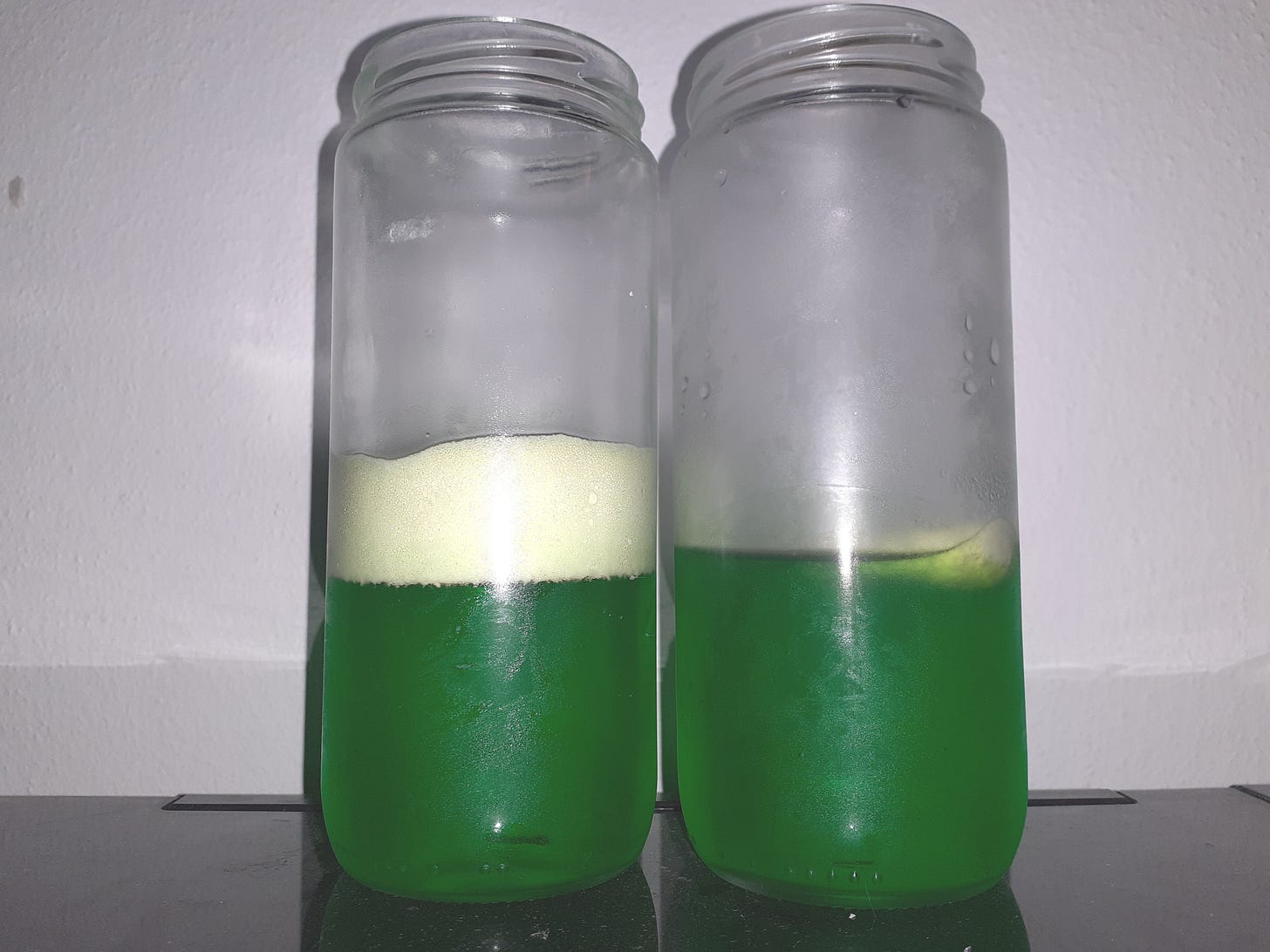Acid Base Reaction of Sodium Bicarbonate Citric Acid and Gelatin
https://www.researchgate.net/publication/379541384_Acid_Base_Reaction_of_Sodium_Bicarbonate_Citric_Acid_and_Gelatin
Acid Base Reaction of Sodium Bicarbonate Citric Acid and Gelatin
Timothy Winey
Thursday, April 4, 2024
A preparation of Gelatin, Sucrose, green food coloring and Citric Acid was prepared by heating in a pan until all ingredients were completely dissolved. The sample was then split equally into two jars with one jar (left) being exposed to a Torsion Field for 15 minutes while cooling. Both samples were then placed in a refrigerator for 6 hours. Gelation was incomplete when the samples were removed (still liquid).
Gelatin, which is derived from collagen, undergoes gelation when its triple helix structure unravels and forms a gel network. This process is highly dependent on the pH of the solution. Gelatin typically gels best in a mildly acidic environment (pH around 4-7).
Citric acid is an acidulant commonly used to adjust the pH of food products. If citric acid is added to a gelatin solution and the resulting pH becomes too low, it can hinder gelation because it may destabilize the structure of gelatin molecules, preventing them from forming the necessary network for gelation. Competing Interactions: Citric acid can also interfere with gelation by competing with gelatin molecules for available water molecules. Gelation requires water to hydrate the gelatin molecules and allow them to interact and form the gel network. If citric acid is present in high concentrations, it can potentially bind to water molecules, reducing the amount of water available for gelatin hydration and gelation.
Ionic Strength: Citric acid, when dissociated in solution, contributes to the ionic strength of the solution. Changes in ionic strength can affect the gelation process of gelatin. High ionic strength can disrupt the gelatin gel network formation by interfering with the electrostatic interactions between gelatin molecules.
½ teaspoon of Sodium Bicarbonate was then added to both samples with a marked difference in reaction rate and volume. The experimental sample (left) reacted instantly and vigorously in contrast to the tepid reaction of the control sample (right). The energetic difference between the two samples was reminiscent of the many nucleation reaction experiments Winey has conducted with various carbonated beverages. Once again, Torsion Fields appear to have aided in lowering the energy barrier/s in a chemical reaction.



